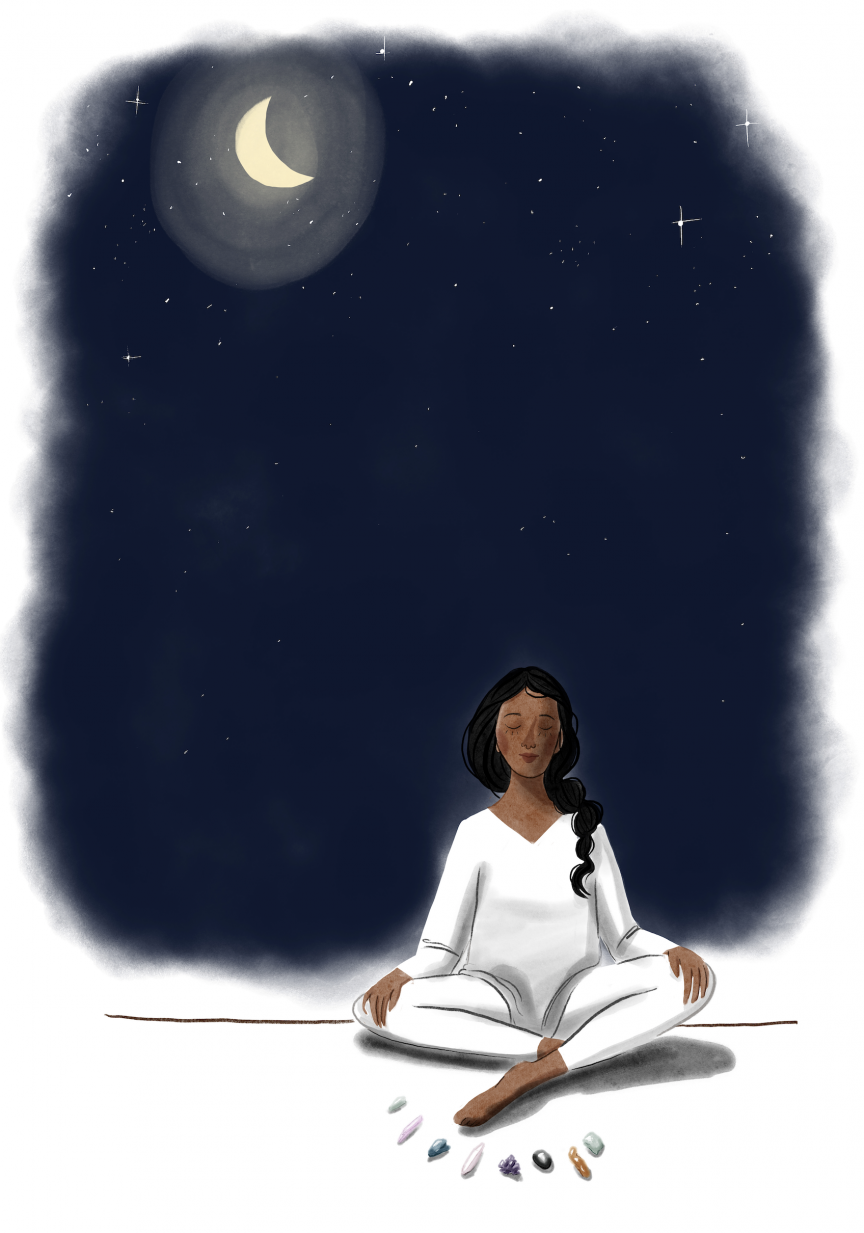Moonbathing. A sneak preview from my new book, Ancient Wisdom for Modern Living (pre-order here).
We’ve been worshipping the moon for millennia and summer is the perfect time to catch those moon rays. We happily strip off to bath in the sunlight but how many of us do the same for the moon? Moon worship spans ancient religions across the world – from India, China, Africa, the Middle East, the Americas and Europe. It’s believed to precede worship of the sun in every ancient culture. Although we often tend to associate moon worship with goddesses (Chinese Chang’e; Greek Selene; Egyptian Isis, Roman Luna etc.) there are equally as many lunar gods (Babylonian Sin; Japanese Tsukuyomi; Indian Chandra etc.).
Many ancient cultures developed a lunar calendar – and the moon still rules over festivals in the Hindu, Jewish, Taoist, Buddhist and even, in the case of Easter, Christian faith. The Moon was our first calendar and many cultures (including Native American, Irish and West African) give names to the thirteen full moons that usually make up the solar year.
Moonbathing is used specifically in Ayurveda to cool those with too much pitta fire energy. It’s said to help calm hypertension, hives, rashes, urticaria and other inflammatory conditions. However, during high summer, everyone can benefit from its soothing, cooling light.
Ideally you should moonbathe during the waxing phase of the moon. The full moon is considered the most auspicious time of all.
If you fancy turning your moonbathing into a precise ayurvedic ritual, you should plaster yourself with sandalwood paste before lying in the moonlight. You can wear white clothes and, traditionally, would wear a pearl necklace. Sipping cool milk from a silver cup completes the story. I’ve never gone that far but I have often slept out on a warm summer’s night and enjoyed being stroked by the soft glow of the moon.
Lunar tea
If cool milk isn’t your thing try brewing up some lunar tea to capture the essence of the moon – it’s particularly potent at the full moon.
Choose your favourite herbs and edible flowers (please focus on the ‘edible’ bit). I tend to use predominantly rose petals, lavender, lemon balm and borage. Then throw in maybe some catnip, passionflower, hibiscus and violet leaves. But truly, it’s a moveable feast. You can add in some dried herbs if you’re low on the fresh leaves, but I find the result isn’t quite so delicious.
Wash your herbs and flowers and then place in a glass or crystal container. Pour cold water (ideally spring water) over the herbs so they’re totally immersed. Let it sit outside in full view of the moon. You may wish to place a piece of muslin over the top but don’t cover with anything heavier than that. Come morning, simply strain and enjoy.
Moon meditation
In many cultures, the full moon is a time to meditate, to step outside normal everyday life and focus on the ineffable. Buddhists celebrate full moon days because so many events in the life of the Buddha happened under the auspices of the full moon. Why not follow the Buddhist way and set aside full moon days as ‘time out’ from life or at least spend some time in meditation or contemplation. Using the moon as a meditation symbol is supposed to take you into a deeper state of meditation.
If you are a crystal lover, this is also the perfect time to cleanse your crystals. Wash them gently and then lay them out under the rays of our heavenly neighbour.
Illustration from Ancient Wisdom for Modern Living by Maggie Cole
